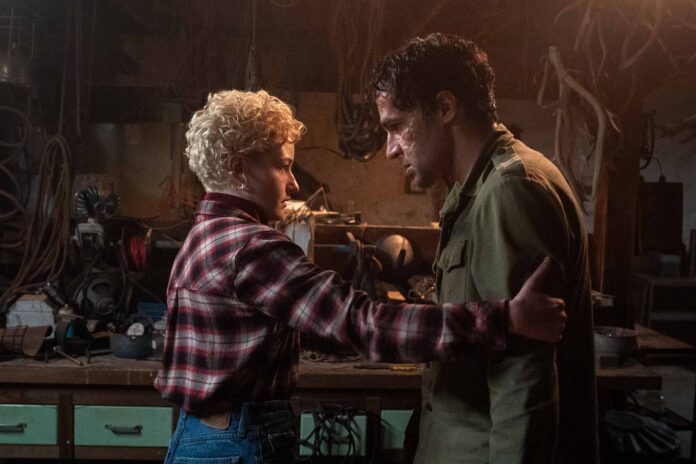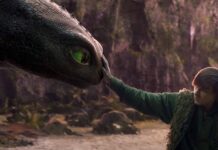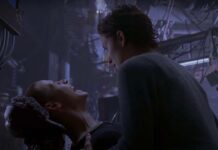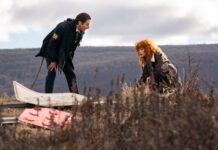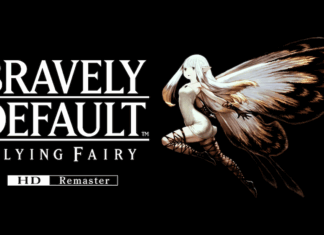[ad_1]
The latest Universal Monsters movie is finally here. Leigh Whannell’s Wolf Man is now theaters, kicking off the horror movie calendar for 2025 and giving fans everywhere a chance to see a new vision of a classic movie creature.
A re-imagining in just about every way of the classic werewolf films that Universal released in the 1940s, Wolf Man follows Blake (Christopher Abbott), a husband and father who’s clawed by a werewolf on the way to his father’s secluded farm in Oregon, who begins to change into something monstrous while his family looks on. It’s an intimate, often claustrophobic film with lots of body horror thrown in, and it all builds to an ending that mirrors events in Blake’s past.
So, how does Wolf Man end, and what does it all mean? Let’s take a closer look.
What happens at the end of the new Wolf Man?
Most of the Wolf Man narrative takes place over a single night, following the initial werewolf attack that leaves Blake with a nasty claw mark on one arm. With their moving van crashed in the woods, Blake, his wife Charlotte (Julia Garner) and their daughter Ginger (Matilda Firth) escape to Blake’s father farmhouse, which Blake has now inherited after his father was declared legally dead.
Inside, the family locks the doors and plans to wait out the night while the strange creature that attacked them is outside. But the claw mark on Blake’s arm soon turns nastier, and Blake begins exhibiting strange symptoms. His skin takes on a new texture, his senses are heightened, and worst of it all, he finds it harder and harder to understand human speech.
The family tries to escape in an old truck, only to be stopped by the werewolf creature outside, but by the film’s climax, they have no choice but to run. Blake has grown ever more savage, leaving Charlotte to attempt to lead Ginger to safety. As they attempt escape, the original werewolf attacks, and Blake has just enough humanity left in him to know that he must defend his family. So, he fights the creature and manages to kill it, only to discover that it’s actually his own father, who’s been transformed into a creature that the local indigenous people call “The Face of the Wolf,” a monster in largely human form, but with wolfen features and behaviors. It is, the family realizes, exactly what Blake himself is becoming.
As Blake’s savagery intensifies, Charlotte and Ginger again try to flee, with Blake’s father’s gun along for safekeeping, only to be pinned down in the same deer blind where Blake first encountered the creature as a boy. Blake climbs the deer blind after them, snarling and snapping, until he stands before his family, suffering, full of rage, and fighting with every bit of humanity he has left to avoid killing them. Finally, it’s Ginger who tells her mother that Blake is in pain, and wants them to free him. When Blake lunges, Charlotte fires, killing her husband while also freeing him from the werewolf curse.
As the sun rises, Charlotte and Ginger walk out into the valley near the farm, the same valley Blake described to Charlotte when he first asked her to come with him to the farm. In describing the good qualities of the place where he grew up, Blake laid out his wishes that the family farm could become a place of unity and love for himself and his wife and child, after years spent there in fear under the yolk of his demanding father. He hoped it would be a place where he could show his family love, and found that the shadow of his father’s violent streak wasn’t so easy to escape. By visiting the valley in Blake’s honor, Charlotte and Ginger affirm that they understand the love Blake tried to give them, and that they’ll move on with a new bond between them.
It’s a very clean, very straightforward way of ending the film that doesn’t really leave a lot of wiggle room in terms of a sequel with the same characters. The story of Blake and his family feels largely closed, but the mythology Whannell sets up in the film is fertile, and leaves a lot of angles that could produce other stories somewhere down the line.
Wolf Man is in theaters now. Get tickets at Fandango.
[ad_2]
Source link

